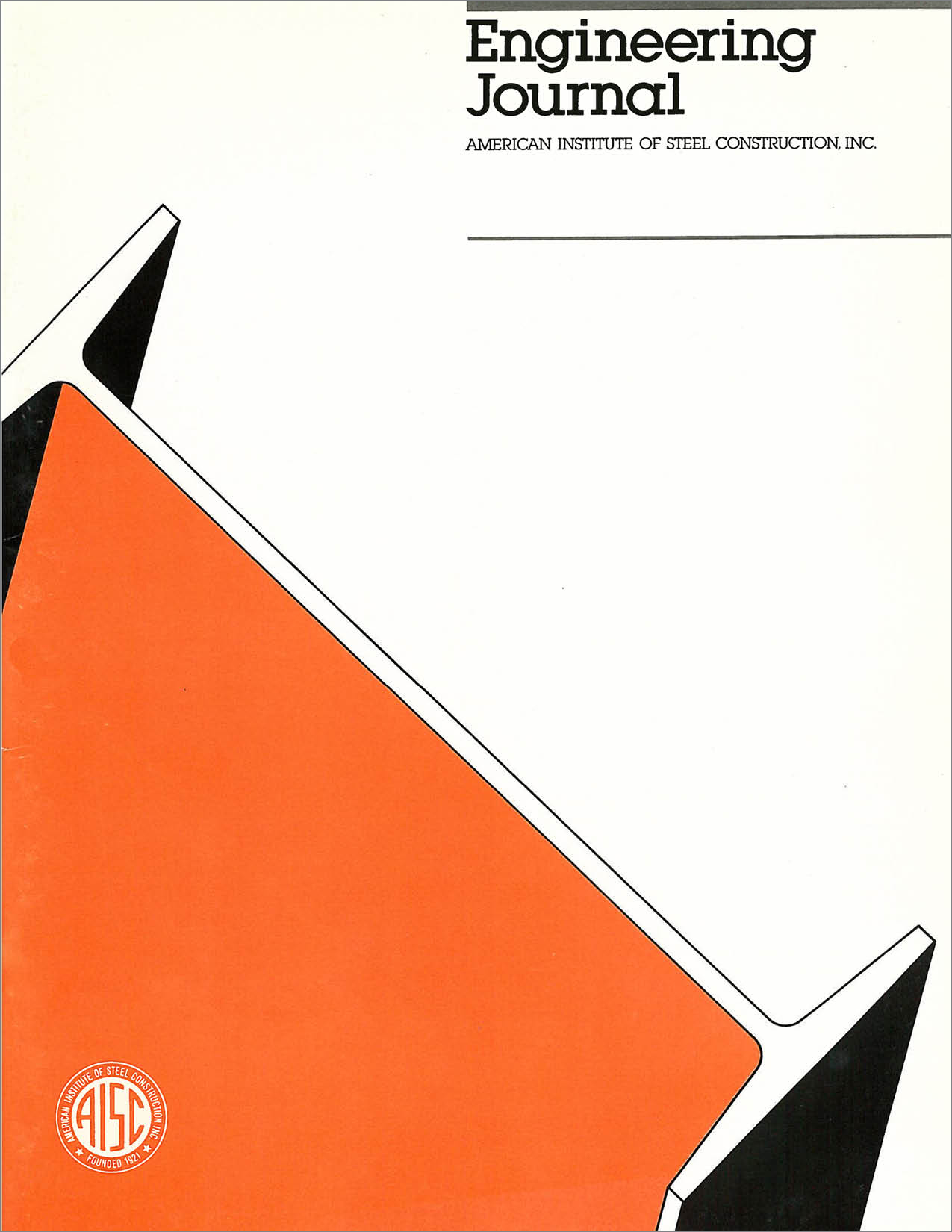Design of Small Base Plates for Wide Flange Columns
DOI:
https://doi.org/10.62913/engj.v27i3.552Abstract
The 9th Edition of the AISC Manual of Steel Construction uses the Murray-Stockwell method for analysis of small base plates, i.e., plates that are only slightly larger than the column depth d and width bf. It combines this method with the cantilever method of the 8th and earlier editions for large base plates. The Murray-Stockwell method assumes a bearing pressure of Fp, the maximum permitted, over an Hshaped contact area under the column cross-section between the plate and the concrete. The cantilever method, on the other hand, assumes a uniform bearing pressure, fp <= Fp, over the entire base plate surface of area. Thus, the two methods assume very different bearing pressure distributions and are difficult to combine into a single method. A solution to this dilemma is to return to the 8th Edition assumption of uniform pressure between the base plate and the concrete. This assumption is conservative with respect to the base plate thickness determination because the true pressure distribution will be less near the plate edges and more under the column cross-section, which cross section also provides support for the plate at its top surface.

